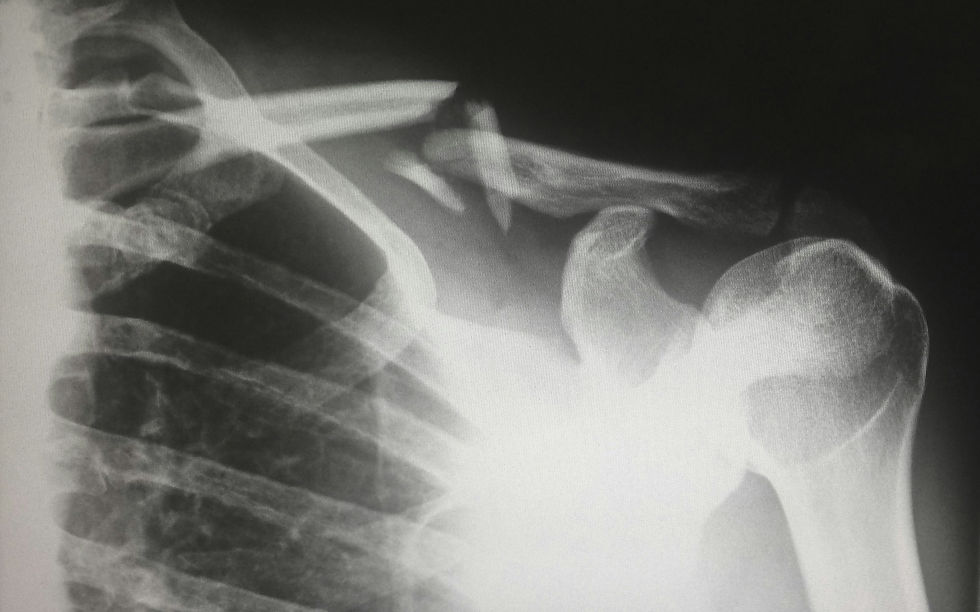Deep Breath
- ANATOMY IN CLAY® System

- Mar 16, 2021
- 3 min read
The Covid-19 pandemic has thrust into the spotlight a basic human function and the organ responsible for it.
Breathing and the lungs, we are talking about you.

Photo source: Science News
As devastating as it is, the pandemic may merely be a symptom of a problem that has persisted, and yet been ignored for years, writes Michael J. Stephen in a new book called “Breath Taking: The Power, Fragility, and Future of Our Extraordinary Lungs.”
Just under half (46 percent) of all Americans in 2020 lived in counties that have “unhealthful” amounts of air pollution, according to the American Lung Association. The World Health Organization has determined that more than 90 percent of human beings live in places with substandard air quality. Certain cities (Seattle, Salt Lake City, New Delhi) prone to air-trapping inversions literally max out the machines used to measure the pollution.
Most of our internal organs (brain, heart, kidneys, etc.) enjoy VIP protection courtesy of the musculoskeletal system. The lungs, on the other hand, are one of the few major organs in constant communication with the environment around us. Writes Stephen: “The atmosphere is a communal space, and lungs are an extension of it.”
Once airborne pollutants, pathogens, allergens make it into the human body, there is little stopping them from getting in the lungs. Traveling through the air, COVID-19 does not need to make a pit stop in the nose to replicate. The virus goes straight to the lungs.
Lungs are quirky, delicate organs, and their evolutionary history may tell us why. In our long journey as a species, from sea to land to upright creatures, lungs were the last organ to develop. Likewise, as babies, our lungs spring into action once we exit the womb —but not before then. (Thanks goes to mothers everywhere for supplying nutrients, including oxygen, through amniotic fluid!)
Stephen writes that there is little we can do directly to the lungs to, say, increase capacity or build healthy tissue. There are ways, however, to work with muscles in the chest and diaphragm, improving in turn the “pump function” of the lungs.
The author also describes the medical benefits of deep-breathing exercises. “When you take easy, slow, deep breaths with the diaphragm, you’re inflating the bottom part of our lungs, where most of the blood flow goes, and the body loves that.”
The vagus nerve sends a signal up the diaphragm to the brain, essentially saying “Oxygen/Carbon Dioxide levels are great,” and the brain responds by secreting feel-good hormones such as prolactin, dopamine and serotonin.
Oxygen/Carbon Dioxide blood levels in COVID-19 patients are… not so great. Physicians in emergency rooms across the country are surprised to see functioning humans with blood oxygen levels as low as 50 percent —a rate that normally renders patients incoherent, even unconscious.
The decline in oxygen often goes unnoticed to the patient, whose lungs work overtime (and undercover) to get the most out of what little oxygen there is. If the case is severe, “fluid builds up in the air sacs and the lungs become stiff, leading to acute respiratory failure,” says Richard Levitan, an ER doctor on the pandemic frontlines in New York City. It is a cruel irony that, for many COVID patients, “taking a deep breath” is literally impossible.
The Buddha once said, “The only path to Nirvana is through the breath.” In Breath Taking, Michael J. Stephen argues something perhaps simpler but no less important: Lungs + Breath = Health.




На сегодняшний день новости отыгрывают очень большую роль в нашей жизни, и я очень рад, что мы тут можем пообщаться на тематику новостей. Так же очень важно в наше время, это получать качественные новости с проверенного новостного портала. Мне повезло, что я могу читать новости про бизнес, финансы, а так же узнавать, что такое инвестиции и как их правильно вести https://delo.ua/ru/finance/vvedennya-v-investuvannya-sho-take-investiciyi-ta-yak-yih-pravilno-vesti-433262/ именно тут и быть уверенным в том, что данный информационный портал делает свою работу качественно. Та и вообще, благодаря ему, я узнал столько новой для себя информации, столько новых тем открыл, что я даже не мог о таком и подумать. Вообщем, хочу добавить, что читайте новости, ведь они помогают нам быть более объективными в оценке событий.